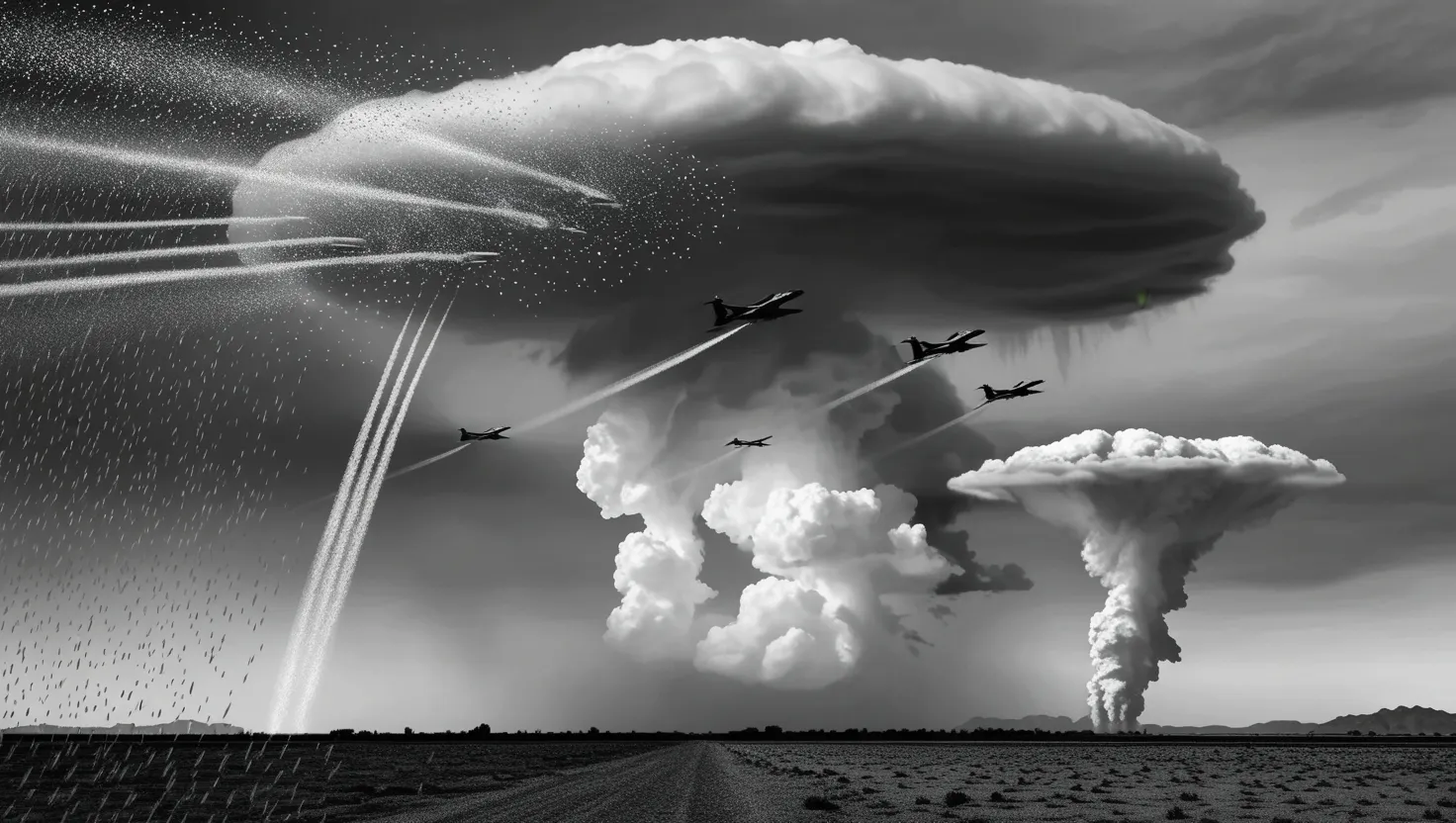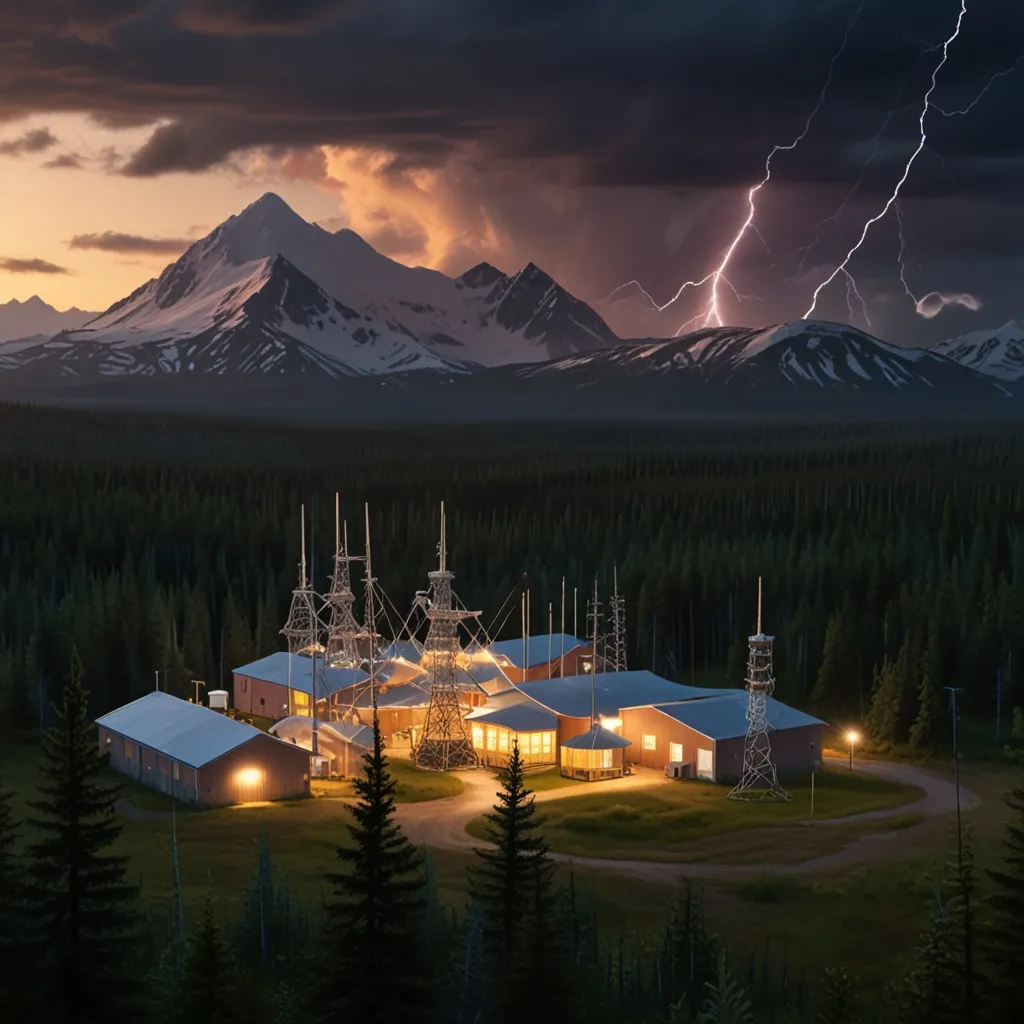Weather modification. It sounds like the premise of a sci-fi movie, but it’s essentially a chapter of modern history. Throughout the last century, governments have genuinely tried to steer the forces of nature, to turn clouds into weapons and storms into strategic assets. Some efforts have faded into obscurity, others remain classified, and a few continue to spark debate about the fine line between protection and manipulation.
Consider the United States in the early 1960s. Here, scientists and military strategists joined hands to chase rain from a dry sky. One program, Project Skywater, was a massive experiment aimed at cloud seeding—injecting chemicals like silver iodide into clouds to coax out precipitation. It wasn’t just about farmers wanting rain. Legislatures started shaping laws around artificially produced snowfall, and agencies coordinated from meteorological labs to state highway patrol offices. The vision was vast, and the ambition was unmistakable. But did you know that by the early 1950s, about 10 percent of U.S. land was being targeted by cloud seeding attempts? The scale was bigger than most imagine. In the mountainous West, winter seeding regularly increased precipitation during critical months—a solid gain, or so the Advisory Committee on Weather Control found.
“Whoever controls the weather controls the world.” — Lyndon B. Johnson
Why would world powers funnel so much money into these experiments? It wasn’t just curiosity. When drought and famine appeared to threaten national security, the impulse to intervene grew. Severe droughts in the postwar era led Congress to investigate both public and private weather programs. A series of hearings concluded that making rain wasn’t just possible, but potentially effective—though never predictable. These hearings also helped ignite interest overseas. By 1951, thirty countries were dabbling in weather modification. Australia, France, South Africa—rainmaking became a global pursuit, but always shrouded in a fog of uncertainty.
How much is too much ambition when facing the unpredictable forces of nature? This question quietly threaded its way through each program. Great minds insisted on caution. Some studies advocated “patient investigation” paired with rigorous experimentation and warned that knowledge of the atmosphere would always be incomplete.
Let’s shift to unexpected methods: did you know the U.S. government once tried to make it rain by literally blowing up dynamite in the sky? On August 17, 1891, scientists funded by Congress set off explosives hoping the blasts would stimulate clouds. It sounds wild now, but early pioneers clung to the belief that forcibly disturbing air could spur rainfall. While results were… underwhelming, the spectacle offered headline fodder and set the tone for a long relationship between science and spectacle.
“How far can you press the boundary between what’s possible and what’s ethical?” If you were in charge, would you sanction such experiments to save a drought-stricken region? It’s worth considering that political pressure often forced science into new, sometimes controversial directions.
Weather as a tool for war isn’t just a theory—it became reality during the Vietnam conflict. The U.S. military ran Operation Popeye: a covert campaign to extend the monsoon season over enemy territory by seeding clouds. The logic was not to destroy with fire or bullets but with relentless torrents, hoping that sodden roads and supply lines would give U.S. forces an edge. The operation reportedly increased rainfall significantly and raised the curtain on weather’s military potential. It also led to international outcry and, eventually, treaties barring weather warfare.
“Science without conscience is but the ruin of the soul.” — François Rabelais
Would nations risk triggering disasters for strategic gain? The Soviet Union conducted rainmaking operations not just to help agriculture but, at times, allegedly to neutralize unfavorable weather before military parades and significant events. And it wasn’t confined to the land. Reports surfaced of large-scale efforts preceding unusual flooding events. Here’s where theory sometimes blurred with conspiracy: when floods arrived suspiciously on schedule, the question became, “Was this nature, or was it engineered?” The records—while incomplete—suggest a pattern of atmospheric engineering often masked as mere weather assistance.
Fast forward to the last few decades, and the story acquires a more technological flavor. The HAARP facility in Alaska is emblematic: a U.S. research station designed to study the ionosphere. Its mission was transparent—mostly. Yet public suspicion turned HAARP into a magnet for conspiracy theories about mind control, earthquake inducement, and global climate manipulation. Was that paranoia, or did sustainable geoengineering always carry the risk of strategic misuse?
Have you ever wondered if the weather forecast might involve more than just prediction, but also intentional intervention? It’s a reasonable question, given advances in atmospheric science and computational modeling.
Beyond these big programs, lesser-known experiments persisted. France and South Africa ran hail suppression campaigns using seeding methods dating to the 1930s. The Alps saw hundreds of attempts to diminish crop damage and prevent avalanches. These measures weren’t strictly military but reflected the same desire for control.
“To invent, you need a good imagination and a pile of junk.” — Thomas Edison
The dual-use potential of geoengineering is where the conversation gets urgent. The same techniques proposed to cool Earth’s atmosphere and slow climate change could easily be used to sabotage crops, disrupt power grids, or amplify storms. If a nation can steer rain to nourish its own fields, could it also deprive a rival of water at a critical time? These are practical questions—not just philosophical—and remain fiercely debated in scientific circles.
How much confidence should we have in technological fixes for climate risks? The more you learn, the more you realize that weather control isn’t as straightforward as adjusting a thermostat. Every action produces ripple effects—sometimes benign, sometimes catastrophic. A single cloud seeding experiment can shift rain patterns miles away, affecting harvests, animal migration, even river levels. Sometimes the consequences don’t show up for years.
Imagine waking up to floods, storms, or drought, only to discover later that scientists thousands of miles away had set the wheels in motion. Would you accept the risk for a greater good, or fight for tighter regulation?
World powers walked an uneasy path, balancing ambition, secrecy, and public scrutiny. Weather modification offered promise but also threatened to backfire disastrously. The line between environmental stewardship and strategic aggression was—and remains—distinctly blurred.
“Everything we call real is made of things that cannot be regarded as real.” — Niels Bohr
Throughout this history, another theme stands out: the persistence of conspiracy. Whenever a hurricane swells more than usual or a drought grips longer than expected, whispers arise. Are these truly acts of nature, or signs of hidden intervention? Sometimes coincidence is just that; other times, the patterns are hard to ignore. We might ask: Should nations disclose the full scope of their weather experiments? Or does secrecy itself add another layer of risk?
The legacy of these programs is a patchwork—unsolved mysteries, wild ambitions, and practical gains. We have document trails leading to cloud-seeding airplanes, rockets, missiles, and underground bunkers. Yet the success rate, despite the hype, is rarely better than nature’s own unpredictability. Still, the pursuit continues, now amplified by climate change: geoengineering proposals focused on solar reflection, carbon capture, and even hurricane diversion draw fevered debate and heavy investment.
Will tomorrow’s weather be shaped as much by government labs as by global wind currents? The question isn’t settled, and the possible answers run along a spectrum from hopeful to sobering.
“Weather is a great metaphor for life—sometimes it’s good, sometimes it’s bad, and there’s nothing much you can do about it but carry an umbrella.” — Terri Guillemets
As long as humanity feels threatened by the whims of nature, some will try to nudge the balance. Our efforts to weaponize the sky may always oscillate between bold innovation and unintended consequences. The challenge is to reconcile imagination with responsibility, and, above all, to remember that the most powerful forces often remain just out of reach. Would you trust a world where the forecast was as much intention as prediction? That’s the question governments and citizens alike will keep facing under the ever-changing sky.






